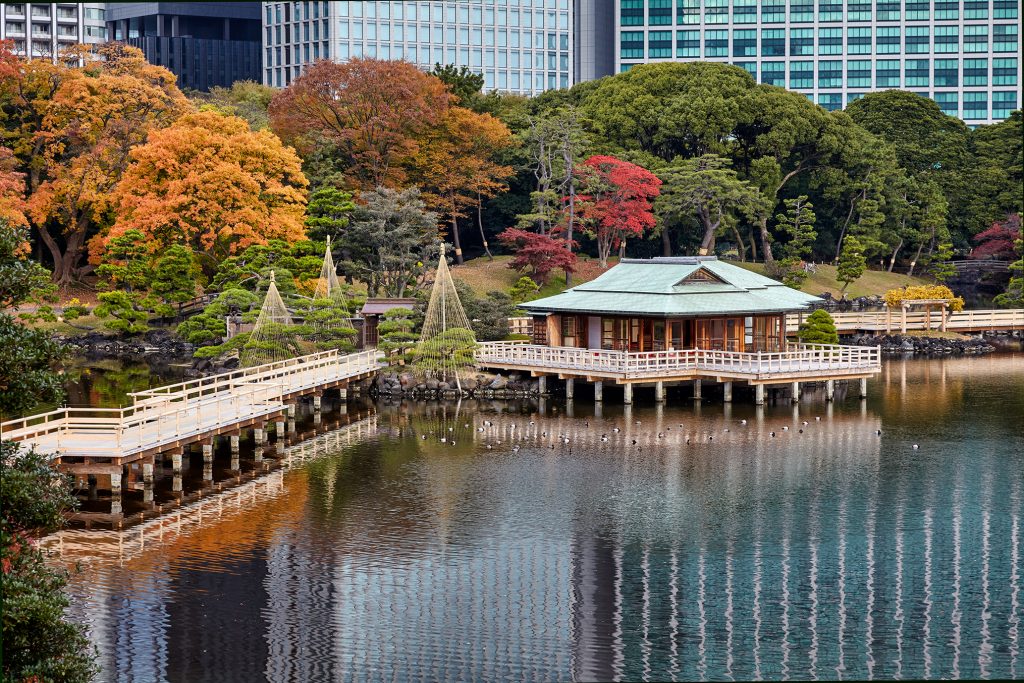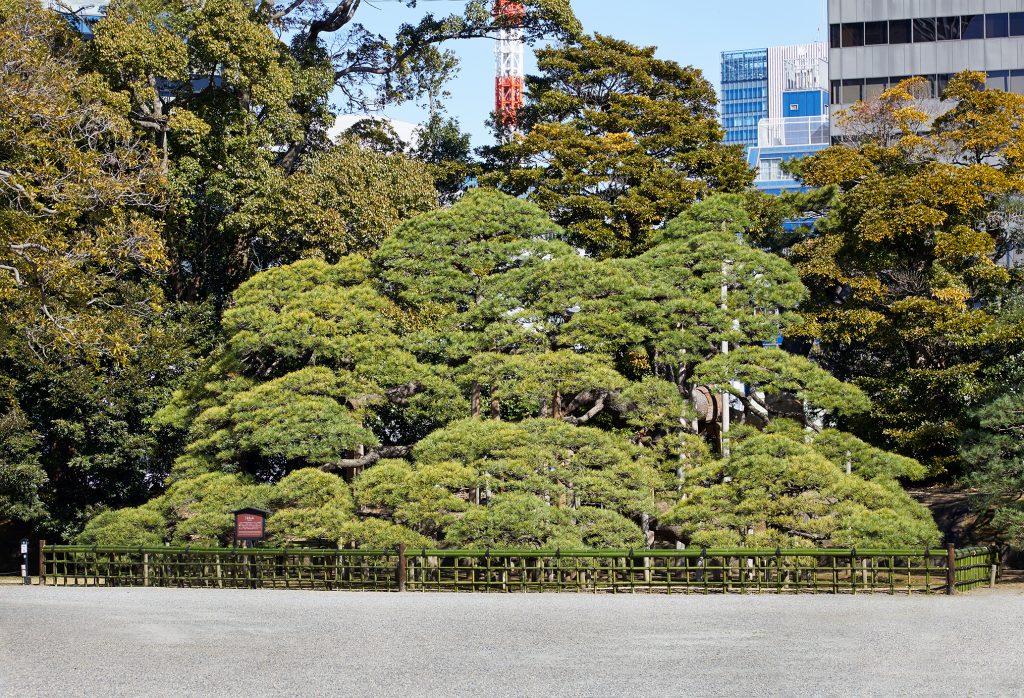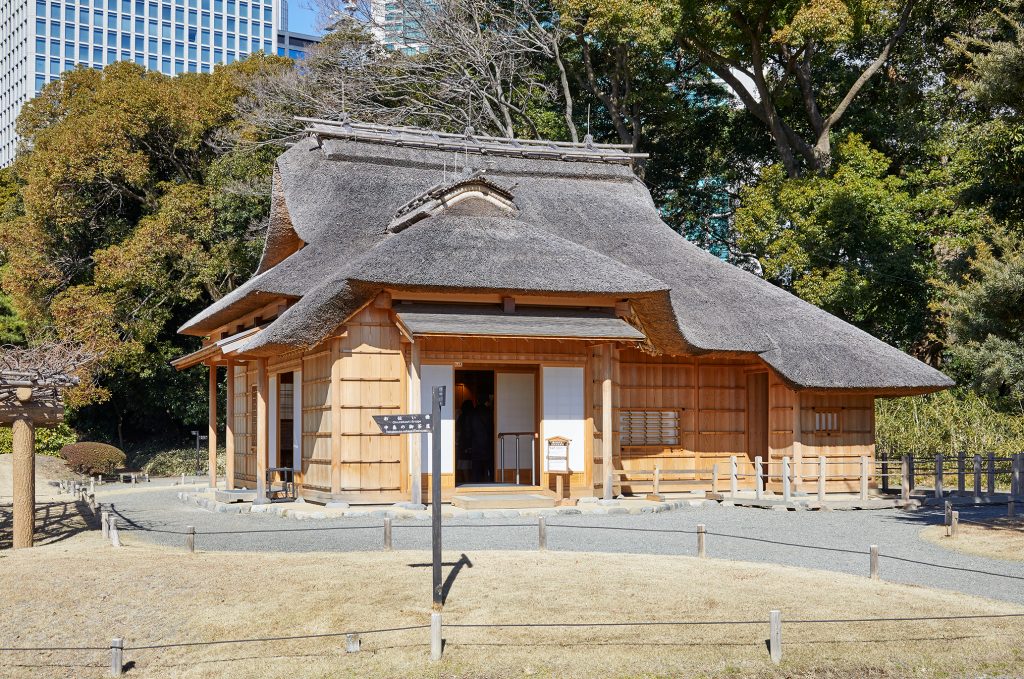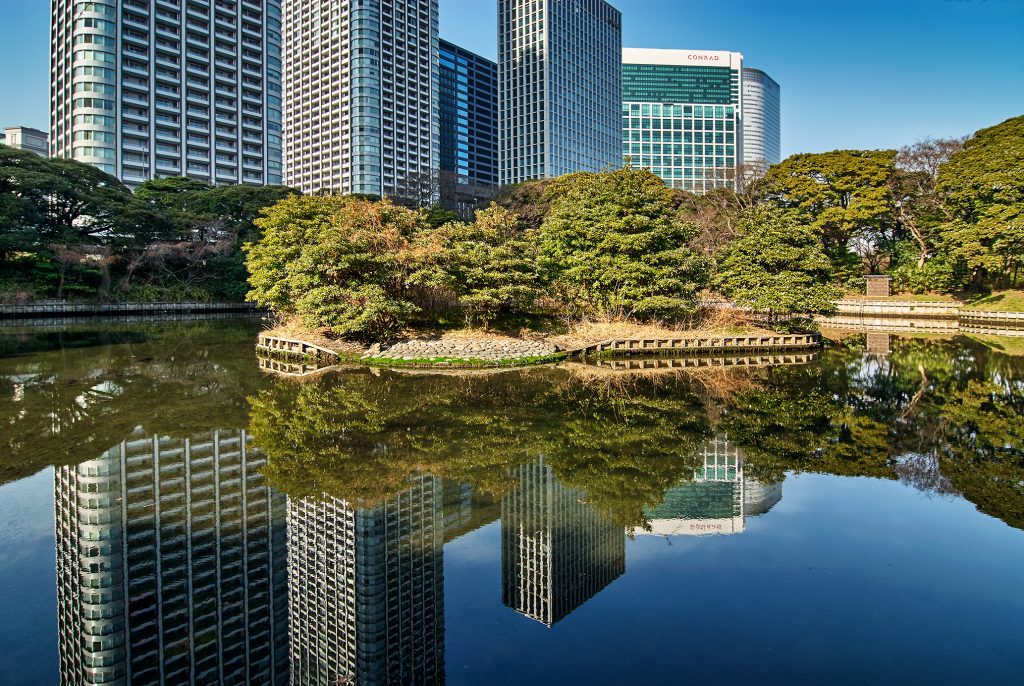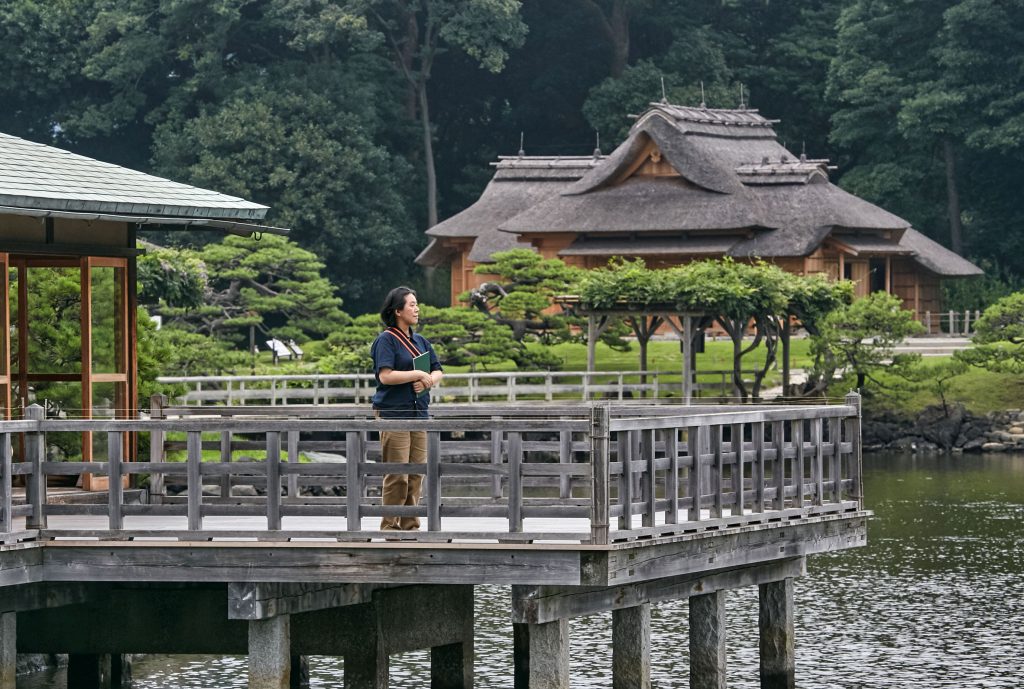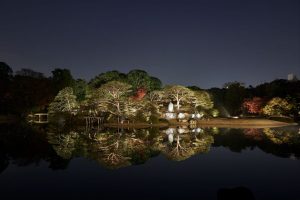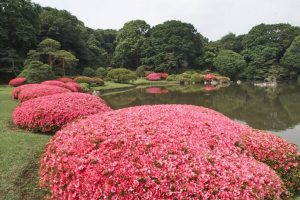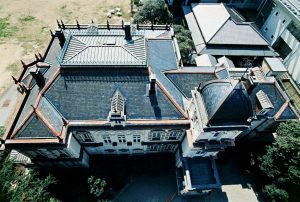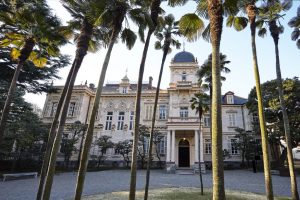The green area across from the high-rise buildings and the expressway is Hamarikyu Gardens. It is often called “a National Treasure of the Garden World.”
A typical daimyo garden built by a feudal lord (daimyo) at his estate is designed as a stroll-type garden that combines flat areas and miniature hills arranged around a pond. Hamarikyu, on the other hand, has two components—a stroll garden with a pond on the south side and a vast lawn on the north side—and boasts an expansive territory of 250,215㎡.
Another unique feature of the garden is Shioiri Pond, which draws in sea water from Tokyo Bay. The unique waterfront location of Hamarikyu creates a stunning scenery.


